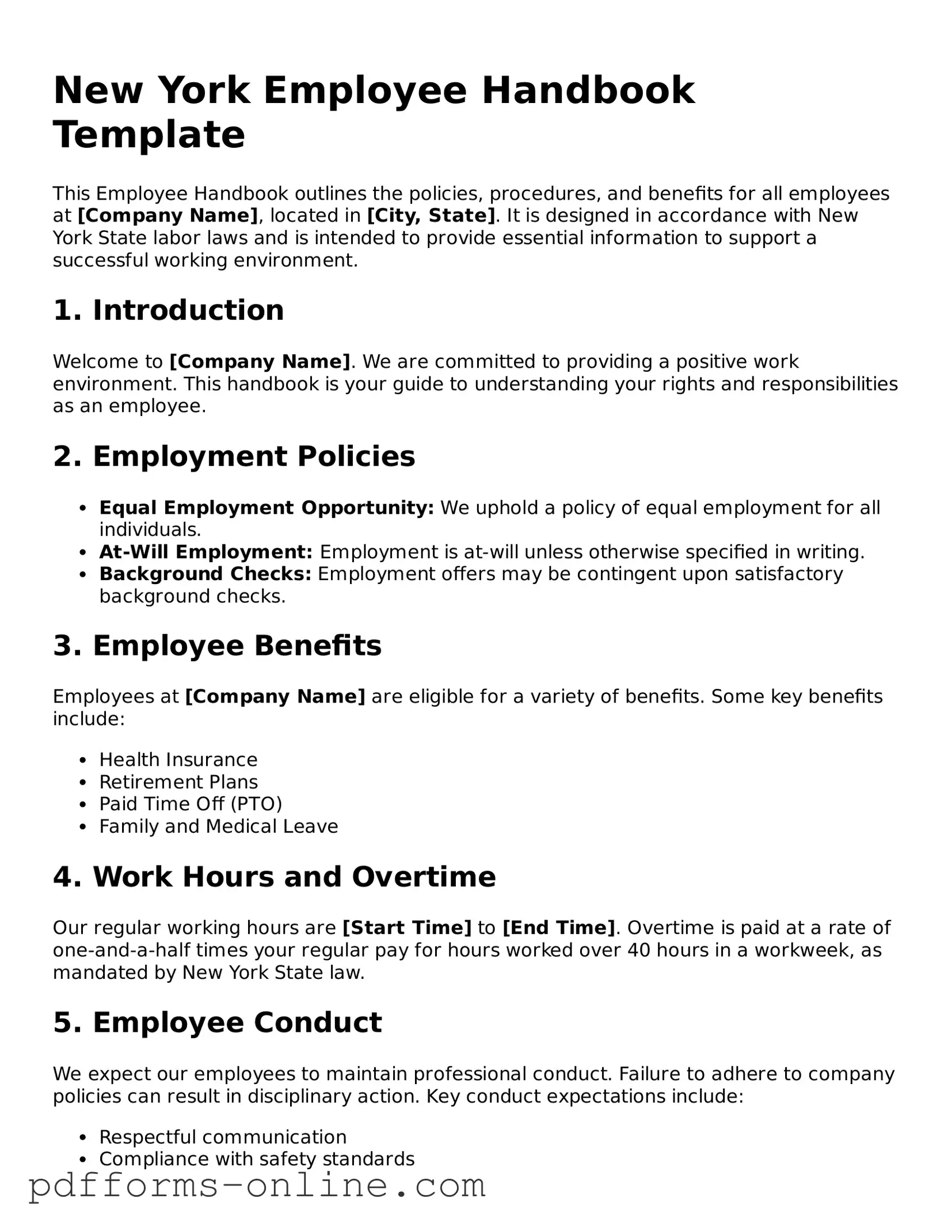New York Employee Handbook Template
This Employee Handbook outlines the policies, procedures, and benefits for all employees at [Company Name], located in [City, State]. It is designed in accordance with New York State labor laws and is intended to provide essential information to support a successful working environment.
1. Introduction
Welcome to [Company Name]. We are committed to providing a positive work environment. This handbook is your guide to understanding your rights and responsibilities as an employee.
2. Employment Policies
- Equal Employment Opportunity: We uphold a policy of equal employment for all individuals.
- At-Will Employment: Employment is at-will unless otherwise specified in writing.
- Background Checks: Employment offers may be contingent upon satisfactory background checks.
3. Employee Benefits
Employees at [Company Name] are eligible for a variety of benefits. Some key benefits include:
- Health Insurance
- Retirement Plans
- Paid Time Off (PTO)
- Family and Medical Leave
4. Work Hours and Overtime
Our regular working hours are [Start Time] to [End Time]. Overtime is paid at a rate of one-and-a-half times your regular pay for hours worked over 40 hours in a workweek, as mandated by New York State law.
5. Employee Conduct
We expect our employees to maintain professional conduct. Failure to adhere to company policies can result in disciplinary action. Key conduct expectations include:
- Respectful communication
- Compliance with safety standards
- Adherence to confidentiality agreements
6. Grievance Procedure
If you have concerns or grievances, it is important to address them. Follow these steps:
- Report the issue to your immediate supervisor.
- If not resolved, escalate to the Human Resources department.
- Document all communications regarding the grievance.
7. Acknowledgment
All employees are required to sign an acknowledgment of their receipt and understanding of this Employee Handbook. Please complete the section below:
I, [Employee Name], acknowledge that I have received and read the Employee Handbook for [Company Name].
Signature: [Employee Signature] Date: [Date]
